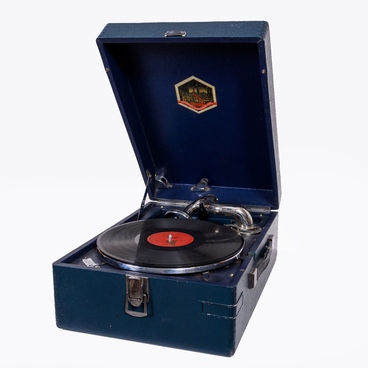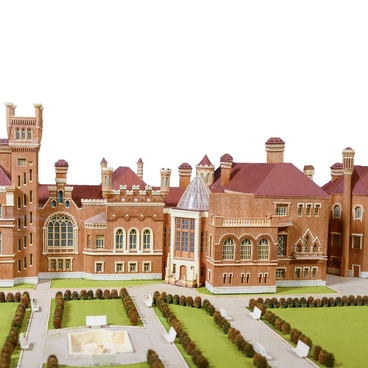The exposition of the National Museum of the Republic of Mari El displays a 1.5×2.5-meter textile panel with a portrait of Joseph Stalin. It was manually woven and embroidered by the workers of the women’s artel “Truzhenitsa” in the early 1950s. The panel was going to be presented to the leader of the party and the country on his birthday, December 21, 1953. But on March 5, 1953, Stalin passed away, and the gift remained in Yoshkar-Ola.
This exhibit combines both traditional Mari motifs and some new images and techniques. For example, satin stitches were uncharacteristic of the Mari embroidery, including the diagonal satin stitch used for this panel. The Mari women called this technique “rushla tur”, which meant “Russian-like”. The traditional embroidery techniques included double linear stitches for creating a contour, diagonal stitches for ornaments, and a pattern that resembled a woven design. The main motifs of national embroidery were simplified images of people, animals and birds, floral and geometric patterns.
Up to the mid-20th century, the Mari women used hand-made wool and silk threads. However, this panel was created with the use of factory-made mouline threads of red, brown, yellow, green, and white colors — the hues that are most often found in traditional Mari handicrafts. In the older works, the color scheme was wider and included black and blue colors.
The panel presents a combination of folk geometric patterns and realistic images: the portrait of Joseph Stalin, miniature cityscapes, and scenes from the lives of Mari workers and peasants, as well as the Soviet state emblem below the portrait.
The artel “Truzhenitsa”, where the panel was produced, was opened in Mari El in 1928. In 1960, it was transformed into a same-name factory. Apart from decorative panels, it also produced other items featuring national embroidery — napkins, rugs, curtains. Women usually used linen or woolen cloth of light colors, less often red or yellow, and mostly embroidered with mouline thread.
This exhibit combines both traditional Mari motifs and some new images and techniques. For example, satin stitches were uncharacteristic of the Mari embroidery, including the diagonal satin stitch used for this panel. The Mari women called this technique “rushla tur”, which meant “Russian-like”. The traditional embroidery techniques included double linear stitches for creating a contour, diagonal stitches for ornaments, and a pattern that resembled a woven design. The main motifs of national embroidery were simplified images of people, animals and birds, floral and geometric patterns.
Up to the mid-20th century, the Mari women used hand-made wool and silk threads. However, this panel was created with the use of factory-made mouline threads of red, brown, yellow, green, and white colors — the hues that are most often found in traditional Mari handicrafts. In the older works, the color scheme was wider and included black and blue colors.
The panel presents a combination of folk geometric patterns and realistic images: the portrait of Joseph Stalin, miniature cityscapes, and scenes from the lives of Mari workers and peasants, as well as the Soviet state emblem below the portrait.
The artel “Truzhenitsa”, where the panel was produced, was opened in Mari El in 1928. In 1960, it was transformed into a same-name factory. Apart from decorative panels, it also produced other items featuring national embroidery — napkins, rugs, curtains. Women usually used linen or woolen cloth of light colors, less often red or yellow, and mostly embroidered with mouline thread.



